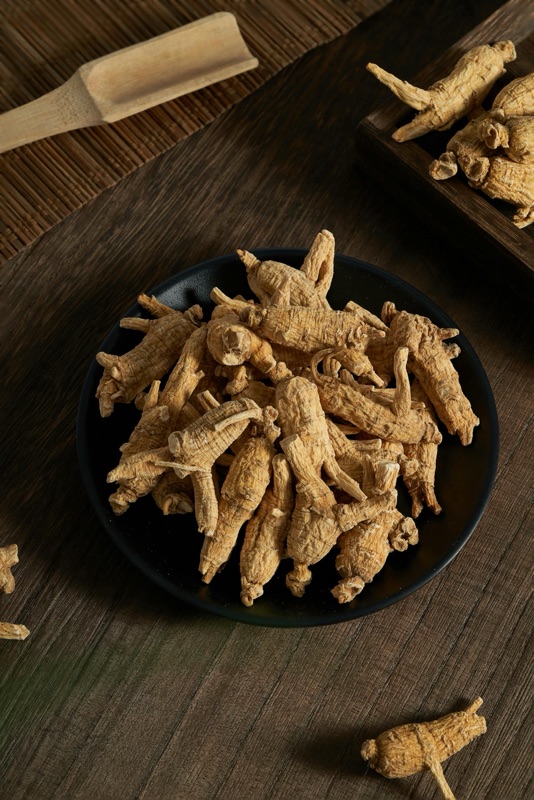Botanical Basics
- Common Name(s): Marshmallow, Marshmallow Root
- Folk Name(s): Sweet Weed, Schloss Tea, Mallards, Mortification Root
- Scientific/Latin Name: Althaea officinalis
- Family: Malvaceae (Mallow family)
- Plant Type: Perennial herb
- Botanical Description: Grows 3–6 ft tall with erect stems, velvety heart-shaped leaves, and soft pink-to-white mallow-like flowers. The roots are thick, white, and mucilaginous.
- Growing Zones/Climate: USDA Zones 3–9
- Best Zones for Growth: Cool to temperate zones with moist soil
- Habitat & Range: Native to Europe, Western Asia, and North Africa; thrives in marshes, riverbanks, and damp meadows; now cultivated worldwide
Cultivation & Harvest
- Soil & Sun Requirements: Prefers moist, rich, loamy soil; thrives in full sun to partial shade
- Propagation: By seed (sown in autumn or spring after stratification) or by root division
- Companion Planting: Pairs well with other moisture-loving herbs like mint, angelica, and valerian
- Harvesting Guidelines: Roots dug in fall of second or third year for maximum mucilage; leaves and flowers harvested in summer when in bloom
- Drying/Preservation: Roots sliced and dried at low temperatures; leaves and flowers air-dried in shade; stored in airtight containers
Traditional & Historical Use
- Cultural Significance: Used in ancient Egypt as a soothing herb and food; later used in medieval European apothecaries. The modern confection “marshmallow” was originally made with its root sap.
- Traditional Medicine: Decoctions and poultices for sore throats, wounds, and digestive issues. Valued as a soothing demulcent for mucous membranes.
- Symbolism: Represents softness, compassion, protection, and healing.
Medicinal & Practical Properties
- Active Constituents: Mucilage polysaccharides, flavonoids, pectins, tannins, asparagine, and trace volatile oils
- Medicinal Uses:
- Soothes sore throats, coughs, and respiratory irritation
- Calms digestive tract (ulcers, gastritis, reflux, colitis)
- Topical poultice for wounds, burns, insect bites
- Mild diuretic for urinary tract irritation
- Gentle anti-inflammatory for skin conditions
- Preparation Methods: Infusions (cold or hot), decoctions, syrups, tinctures, lozenges, poultices
- Dosage & Guidelines:
- Cold infusion: 2–4 g dried root soaked overnight in water, sipped throughout the day
- Tea: 1–2 tsp root per cup hot water, 2–3 times daily
- Poultice: Crushed root applied externally
- Safety/Precautions: Very safe and well-tolerated. May slow absorption of pharmaceuticals if taken together; space doses apart.
Magical & Spiritual Properties
- Elemental Association: Water
- Planetary/Deity Correspondence: Venus and the Moon; associated with healing goddesses and nurturing energies
- Magical Correspondences: Love, protection, healing, compassion, spiritual connection
- Ritual Use: Added to healing sachets and teas; burned as incense for love and harmony; planted near homes for protection and peace; used in ancestor rites to soften grief
- Symbolism in Divination/Dreams: Suggests the need for gentleness, comfort, or nurturing; can signify emotional healing or protective guidance
Ecological & Culinary Uses
- Pollinator Value: Flowers attract bees, butterflies, and other pollinators
- Wildlife Uses: Provides nectar and foliage for insects; grows in wetland habitats supporting diverse ecosystems
- Culinary Uses: Historically used to thicken sweets and confectionaries (original marshmallows); young leaves edible in salads; roots used in syrups and candies
Household/Practical Uses
- Quick Uses: Cold infusion for sore throat, poultice for skin, protective charm herb
- Notable Traits: Its mucilage gives it strong soothing powers for both body and spirit
- Special Notes: A true “comfort herb” — associated with peace, calm, and ancestral care

Supporting Notes
- Grieve, M. A Modern Herbal (1931)
- Chevallier, Andrew. Encyclopedia of Herbal Medicine (2016)
- Duke, James A. Handbook of Medicinal Herbs (2002)
- Mills, Simon. Out of the Earth: The Essential Book of Herbal Medicine (1991)
- Hoffmann, David. Medical Herbalism (2003)
No comments:
Post a Comment